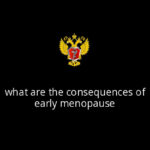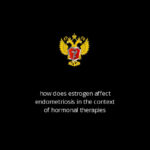Determining a specific toxic estrogen level associated with unhealthy proliferation of endometrial cells can be challenging, as estrogen levels can vary widely among individuals and are influenced by factors such as age, hormonal status, and underlying health conditions. Additionally, the threshold for estrogen toxicity may differ depending on the context, such as whether estrogen is being administered exogenously (e.g., hormone replacement therapy) or produced endogenously by the body.
However, when considering long-term estrogen exposure, particularly in the context of hormone replacement therapy, the goal is typically to maintain estrogen levels within a physiological range that provides therapeutic benefits while minimizing the risk of adverse effects, such as endometrial hyperplasia or cancer.
In general, for women receiving estrogen therapy, the risk of endometrial hyperplasia and cancer is minimized by adding progestin therapy (combined estrogen-progestin therapy) to protect the endometrium. Progestin counteracts the proliferative effects of estrogen on the endometrium and reduces the risk of estrogen-induced hyperplasia.
For women with an intact uterus, the combination of estrogen and progestin is typically used to minimize the risk of endometrial hyperplasia and cancer. The addition of progestin allows for continuous estrogen therapy while providing endometrial protection. The specific dosage and formulation of estrogen and progestin should be individualized based on factors such as the woman’s age, menopausal symptoms, and risk factors for endometrial cancer.
When monitoring estrogen levels in women receiving hormone replacement therapy, healthcare providers typically aim to maintain estrogen levels within a physiological range that provides symptomatic relief without excessive stimulation of endometrial proliferation. Estrogen levels that are too high may increase the risk of endometrial hyperplasia and cancer, while estrogen levels that are too low may fail to provide adequate relief of menopausal symptoms.
The optimal estrogen level for long-term hormone replacement therapy may vary depending on individual factors such as age, health status, and treatment goals. Healthcare providers may monitor estrogen levels through blood tests and adjust hormone therapy dosages as needed to maintain estrogen levels within a safe and effective range. It’s important for women receiving hormone replacement therapy to undergo regular monitoring and follow-up with their healthcare providers to ensure the safety and efficacy of treatment over the long term
The dosage of estrogen hormone replacement therapy (HRT) for menopause varies depending on individual factors such as age, symptoms, medical history, and risk factors. Here’s a general overview addressing your questions:
Lowest and Highest Doses of Estrogen for Menopause:
The lowest effective dose of estrogen for menopause is typically around 0.3 mg of oral conjugated estrogens or 0.5 mcg of transdermal estradiol.
Higher doses of estrogen may be prescribed depending on the severity of symptoms and individual response to treatment. However, doses exceeding 1-2 mg of oral conjugated estrogens or 100-200 mcg of transdermal estradiol are less commonly used due to increased risks of adverse effects.
Pros and Cons of Hormone Replacement Therapy (HRT):
Pros:
- Relief of menopausal symptoms such as hot flashes, vaginal dryness, and night sweats
- Prevention of bone loss and osteoporosis
- Improvement in mood and quality of life
- Reduction in risk of colorectal cancer
Cons:
- Increased risk of breast cancer, especially with long-term use of combined estrogen-progestin therapy
- Increased risk of blood clots, stroke, and cardiovascular events, particularly in older women or those with pre-existing risk factors
- Potential side effects such as breast tenderness, bloating, headaches, and nausea
- Cost of medication and regular monitoring
- Need for individualized treatment based on medical history and risk factors
Safe Long-Term Dose of Estrogen for Menopause:
- There is no universally agreed-upon safe long-term dose of estrogen for menopause, as individual response to hormone therapy varies.
- The goal of hormone therapy is to use the lowest effective dose for the shortest duration necessary to relieve symptoms and manage health risks.
- Regular monitoring and reassessment of treatment goals and risks are essential for optimizing long-term hormone therapy.
Permanent Side Effects of Hormone Therapy:
While many of the side effects of hormone therapy are reversible upon discontinuation of treatment, some effects may be permanent or long-lasting:
- Changes in breast tissue, such as increased density or nodularity
- Alterations in lipid profiles and cardiovascular risk factors
- Impact on bone density and risk of fractures
- Potential effects on cognitive function and memory
- Risk of endometrial hyperplasia or cancer with unopposed estrogen therapy (in women with intact uteri)
It’s important for women considering hormone therapy to discuss potential risks and benefits with their healthcare provider and undergo regular monitoring to minimize potential long-term effects.
The decision to use hormone replacement therapy for menopause should be individualized based on a woman’s symptoms, medical history, and preferences, with careful consideration of potential risks and benefits. Close communication with a healthcare provider is essential for monitoring and optimizing treatment
Verified by: Dr.Diab (March 29, 2024)
Citation: Dr.Diab. (March 29, 2024). What is a safe long term dose of estrogen for menopause. Medcoi Journal of Medicine, 4(2). urn:medcoi:article32635.














There are no comments yet
Or use one of these social networks